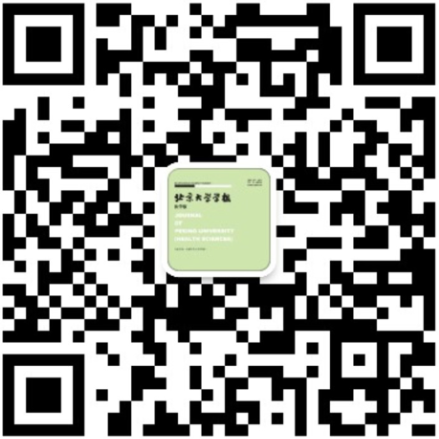北京大学学报(医学版) ›› 2021, Vol. 53 ›› Issue (2): 298-301. doi: 10.19723/j.issn.1671-167X.2021.02.011
西藏地区肾穿刺活检术后出血风险分析
张蕾1,李国梁1,党宗辉1,次仁罗布1,阿勇1,吴玲洁1,刘立军2,Δ( )
)
- 1.西藏自治区人民医院肾脏内科, 拉萨 850000
2.北京大学第一医院肾内科,北京大学肾脏病研究所, 北京 100034
Analysis of bleeding risk in percutaneous renal biopsy in Tibet
ZHANG Lei1,LI Guo-liang1,DANG Zong-hui1, 1,A yong1,WU Ling-jie1,LIU Li-jun2,Δ( )
)
- 1. Department of Nephrology, People’s Hospital of Tibet Autonomous Region, Lhasa 850000, China
2. Renal Division, Institute of Nephrology, Peking University First Hospital, Beijing 100034, China
摘要:
目的: 观察我国西藏地区肾穿刺活检术(percutaneous renal biopsy,PRB)术后出血情况,分析总结与高原地区患者出血相关的危险因素,提高手术安全性。方法: 选择西藏自治区人民医院肾脏内科2016年5月至2018年5月收治的经皮肾穿刺活检术患者临床资料进行回顾性研究,分析诸因素(性别、年龄、血压、血红蛋白、血小板、血肌酐、凝血酶原时间和活化部分凝血酶原时间)与术后出血事件的相关性。结果: 共收集病例150例,平均年龄(41.2±15.6)岁,其中男性比例为58.7%(88/150),女性为41.3%(62/150),术后出血12例(男、女各6例),出血比例8.0%(12/150)。出血组平均年龄与无出血组相比,有偏高趋势[(48.3±20.0)岁vs. (40.6±15.1)岁,P=0.099]。出血组较无出血组高血压发生率、血红蛋白增多症发生率、尿素氮、凝血酶原时间差异均无统计学意义(P>0.05)。出血组血肌酐水平有高于无出血组趋势(P=0.090),出血组较无出血组活化部分凝血酶原时间有延长趋势(P=0.069)。出血组血小板计数明显低于无出血组(P<0.05)。多因素Logistic回归分析发现,活化部分凝血酶原时间延长和较低的血小板计数具有相对较高的出血风险,差异有统计学意义(P=0.079,P=0.082)。结论: 高原地区行PRB总体上是安全、可靠的;高龄、低血小板、肾功能下降、活化部分凝血酶原时间延长与PRB术后出血相关,高血红蛋白不是高原地区PRB术后出血的危险因素。
中图分类号:
- R605
| [1] |
Torres-Munoz A, Valdez-Ortiz R, Gonzalez-Parra C, et al. Percutaneous renal biopsy of native kidneys: efficiency, safety and risk factors associated with major complications[J]. Arch Med Sci, 2011,7(5):823-831.
pmid: 22291827 |
| [2] |
Xu DM, Chen M, Zhou FD, et al. Risk Factors for severe bleeding complications in percutaneous renal biopsy[J]. Am J Med Sci, 2017,353(3):230-235.
doi: 10.1016/j.amjms.2016.12.019 pmid: 28262208 |
| [3] |
Korbet SM, Volpini KC, Whittier WL. Percutaneous renal biopsy of native kidneys: a single-center experience of 1,055 biopsies[J]. Am J Nephrol, 2014,39(2):153-162.
pmid: 24526094 |
| [4] |
Prasad N, Kumar S, Manjunath R, et al. Real-time ultrasound-guided percutaneous renal biopsy with needle guide by nephrologists decreases post-biopsy complications[J]. Clin Kidney J, 2015,8(2):151-156.
pmid: 25815170 |
| [5] |
Manno C, Strippoli GF, Arnesano L, et al. Predictors of bleeding complications in percutaneous ultrasound-guided renal biopsy[J]. Kidney Int, 2004,66(4):1570-1577.
pmid: 15458453 |
| [6] | 高文祥, 高玉琪. 慢性高原病分型、诊断与治疗的研究进展[J]. 第三军医大学学报 2016,38(5):431-436. |
| [7] | Surgeons ACo: advanced trauma life support[M]. 10th ed. American: American College of Surgeons, 2018: 474. |
| [8] | Corapi KM, Chen JL, Balk EM, et al. Bleeding complications of native kidney biopsy: a systematic review and meta-analysis[J]. Am J Kidney Dis, 2012,60(1):62-73. |
| [9] |
Al Turk AA, Estiverne C, Agrawal PR, et al. Trends and outcomes of the use of percutaneous native kidney biopsy in the United States: 5-year data analysis of the nationwide inpatient sample[J]. Clin Kidney J, 2018,11(3):330-336.
doi: 10.1093/ckj/sfx102 pmid: 29988286 |
| [10] |
Tondel C, Vikse BE, Bostad L, et al. Safety and complications of percutaneous kidney biopsies in 715 children and 8 573 adults in Norway 1988-2010[J]. Clin J Am Soc Nephrol, 2012,7(10):1591-1597.
pmid: 22837269 |
| [11] | Lees JS, McQuarrie EP, Mordi N, et al. Risk factors for bleeding complications after nephrologist-performed native renal biopsy[J]. Clin Kidney J, 2017,10(4):573-577. |
| [12] |
Eiro M, Katoh T, Watanabe T. Risk factors for bleeding complications in percutaneous renal biopsy[J]. Clin Exp Nephrol, 2005,9(1):40-45.
pmid: 15830272 |
| [13] |
Martin DS, Pate JS, Vercueil A, et al. Reduced coagulation at high altitude identified by thromboelastography[J]. Thromb Haemost, 2012,107(6):1066-1071.
pmid: 22437051 |
| [14] | Chen W, Liu Q, Wang H, et al. Prevalence and risk factors of chronic kidney disease: a population study in the Tibetan population[J]. Randomized Controlled Trial, 2011,26(5):1592-1599. |
| [15] |
Jonathan JH, Michaela M, Jeffrey SB. The native kidney biopsy: update and evidence for best practice[J]. Clin J Am Soc Nephrol, 2016,11(2):354-362.
pmid: 26339068 |
| [16] | Preuss S, Kuechle C, Wagenpfeil S, et al. Retrospective analysis of ultrasound-detected bleeding complications after ultrasound-guided transcutaneous kidney biopsies[J]. Ultrasound Med Biol, 2017,43(1):153-162. |
| [17] |
Riehl J, Maigatter S, Kierdorf H, et al. Percutaneous renal biopsy: comparison of manual and automated puncture techniques with native and transplanted kidneys[J]. Nephrol Dial Transplant, 1994,9(11):1568-1574.
pmid: 7870344 |
| [18] | Pokhrel A, Agrawal RK, Baral A, et al. Percutaneous renal biopsy: comparison of blind and real-time ultrasound guided technique[J]. J Nepal Health Res Counc, 2018,16(1):66-72. |
| [19] | Mai J, Yong J, Dixson H, et al. Is bigger better? A retrospective analysis of native renal biopsies with 16 Gauge versus 18 Gauge automatic needles[J]. Nephrology (Carlton), 2013,18(7):525-530. |
| [1] | 丁汉东, 王琴, 廖贵益, 郝宗耀. 肾移植术后并发消化道出血的诊治[J]. 北京大学学报(医学版), 2024, 56(5): 902-907. |
| [2] | 侯婉音,董捷. 腹膜透析患者获得性肾囊肿出血3例[J]. 北京大学学报(医学版), 2024, 56(3): 546-550. |
| [3] | 司筱芊,赵秀娟,朱凤雪,王天兵. 创伤出血性休克后急性呼吸窘迫综合征的危险因素[J]. 北京大学学报(医学版), 2024, 56(2): 307-312. |
| [4] | 陈克伟,邓绍晖,刘茁,张洪宪,马潞林,张树栋. 肾血管平滑肌脂肪瘤破裂出血的手术时机[J]. 北京大学学报(医学版), 2024, 56(2): 326-331. |
| [5] | 冯敏,陈哲,程永静. 以十二指肠溃疡为突出表现的IgG4相关性疾病1例[J]. 北京大学学报(医学版), 2023, 55(6): 1125-1129. |
| [6] | 兰东,刘茁,李宇轩,王国良,田晓军,马潞林,张树栋,张洪宪. 根治性肾切除和静脉癌栓取出术大出血的危险因素[J]. 北京大学学报(医学版), 2023, 55(5): 825-832. |
| [7] | 许颖,次仁央金. 高原红细胞增多症与消化性溃疡出血的关系[J]. 北京大学学报(医学版), 2022, 54(1): 161-165. |
| [8] | 高健,胡立宝,陈尘,郅新,徐涛. 经皮肾镜去石术后出血的介入治疗[J]. 北京大学学报(医学版), 2020, 52(4): 667-671. |
| [9] | 王玉华,张国华,张令令,罗俊丽,高兰. 系统性红斑狼疮合并自发性肾上腺出血1例[J]. 北京大学学报(医学版), 2019, 51(6): 1178-1181. |
| [10] | 贾子昌,卞焕菊,韩金涛,赵海燕,栾景源,王昌明,李选. 颈动脉支架成形术后脑高灌注综合征[J]. 北京大学学报(医学版), 2019, 51(4): 733-736. |
| [11] | 袁远,沈明,高旭光. 以蛛网膜下腔出血为首发而血培养阴性的感染性心内膜炎1例报道并文献回顾[J]. 北京大学学报(医学版), 2017, 49(6): 1081-1086. |
| [12] | 丁嘉祥, 王梅. 抗中性粒细胞胞浆抗体相关性小血管炎维持性透析患者并发肺出血1例[J]. 北京大学学报(医学版), 2017, 49(5): 915-918. |
| [13] | 冯雪茹,刘梅林,刘芳,范琰,田清平. 阿司匹林剂量对高龄老年患者血小板功能的影响[J]. 北京大学学报(医学版), 2016, 48(5): 835-840. |
| [14] | 董淑杰, 张婷, 李彦, 翟所迪. 华法林与曲马多相互作用致严重出血的药学监护1例报道[J]. 北京大学学报(医学版), 2014, 46(5): 809-813. |
| [15] | 韩金涛,傅军,李选,王昌明,翟国钧. 动脉瘤性蛛网膜下腔出血栓塞术后早期连续腰椎穿刺治疗的疗效[J]. 北京大学学报(医学版), 2013, 45(4): 639-. |
|
||
